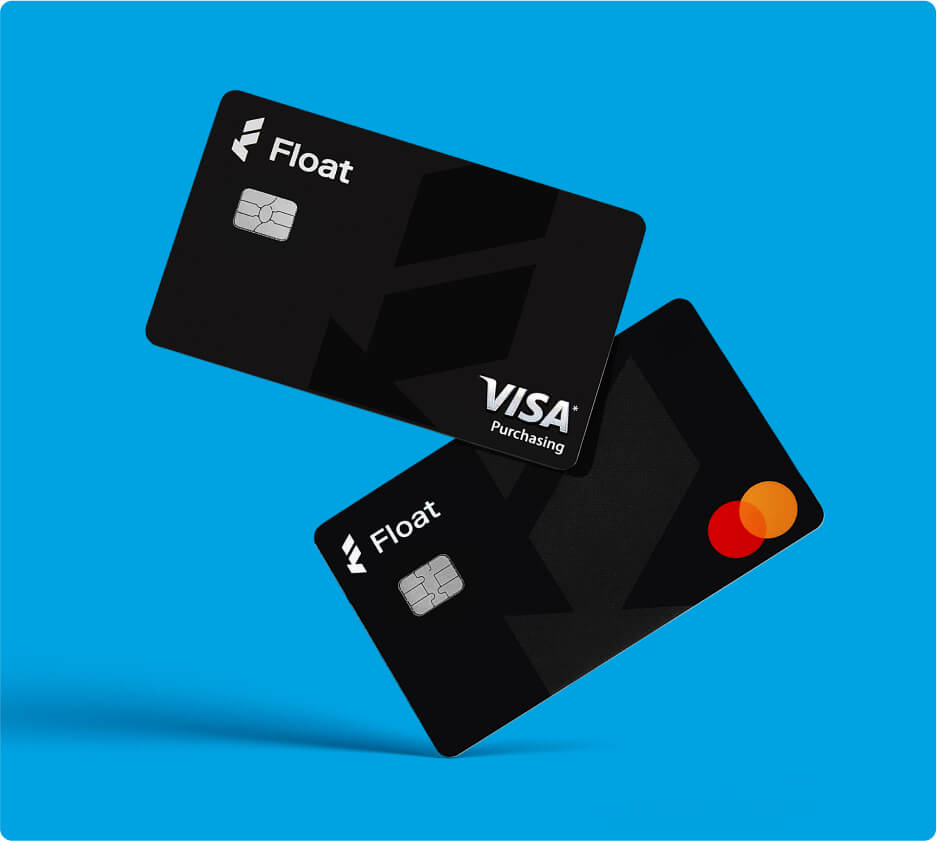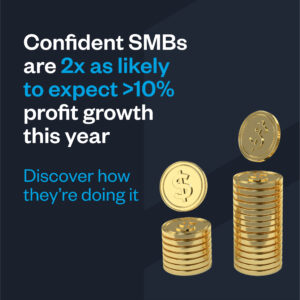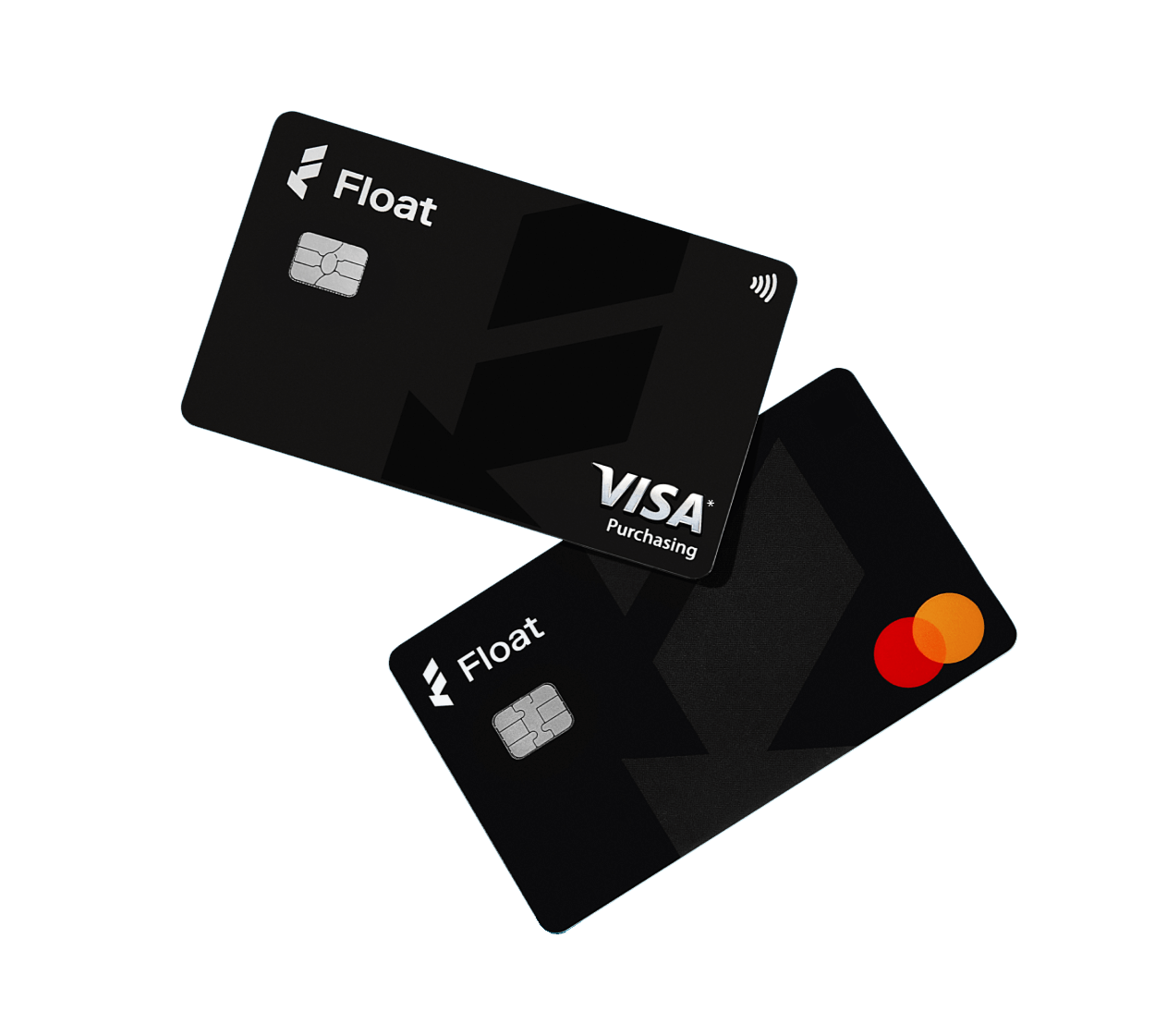Expense Management
Expense Management Explained: Best Practices for Canadian Businesses
Whether you’re a startup or an established business, having a robust expense management system can significantly impact your bottom line. Learn more here.
March 4, 2025

Tracking business expenses shouldn’t feel like a never-ending paper trail. Yet for many Canadian companies, managing spending still involves manual processes, scattered receipts and reactive budgeting. The result is wasted time, financial blind spots and compliance headaches that slow down growth and frustrate staff—but thankfully, modern expense management solutions are here to stay.
By digitizing and automating how your business tracks, categorizes and reports expenses, you can save time, reduce risk and optimize budgets, all while making it simpler for your team to spend like they need to.
In this guide, we’re breaking it all down so you can learn:
- What is expense management?
- Why modernize expense management?
- How does expense management work?
- Expense management vs. spend management
- Types of common business expenses and examples
- The benefits of an expense management system
- How to track business expenses
- Best expense management software
Let’s dive in.
What is expense management?
Expense management is the process businesses use to track, categorize, approve and report company spending. It ensures that all employee purchases and expense reimbursements are accounted for and aligned with company policies.
Traditionally, expense management involved paper receipts, spreadsheets and manual approvals, making it slow, error-prone and frustrating for both employees and finance teams. Lost receipts, delayed reimbursements and lack of real-time visibility meant businesses often struggled to keep spending under control. Many businesses still operate this way today.
Modern expense management solutions eliminate these inefficiencies by automating the entire process. With features like real-time transaction tracking, digital receipt uploads, automated approvals and integrated reporting, businesses can gain full visibility and control over their expenses, without the administrative burden.
Get Your Free Expense Policy Template
A clear expense policy is the foundation of good expense management. Not sure where to start? We’ve got you covered.
This free template will help you:
- Save time with a ready-to-use policy framework
- Customize it to fit your company’s needs
- Stay compliant with clear expense guidelines
Download your free Expense Policy Template for Notion or Google Docs and take the guesswork out of managing employee expenses.
Why modernize expense management?
Outdated expense management processes waste time, increase errors and limit financial visibility. According to a Float study, 66% of Canadian SMBs say their team spends too much time on manual data entry, and 50% spend 10 to 40 hours a month on payments and reconciliation. These inefficiencies add up, draining resources and slowing down growth.
Instead, here’s what modern expense management can do:
- Eliminate manual inefficiencies – Paper receipts and spreadsheets lead to delays, errors and unnecessary admin work. Automation removes these bottlenecks.
- Improve accuracy and compliance – Automated approvals and real-time tracking ensure expenses are tracked correctly and follow company policies, reducing the risk of non-compliance.
- Enhance financial visibility – Businesses get real-time insights into spending trends, making it easier to track budgets, control costs and make informed financial decisions.
- Speed up reimbursements – Employees no longer wait weeks for expense approvals and payments, improving cash flow and reducing frustration. Faster processing also means fewer payroll headaches for finance teams.
- Reduce fraud and errors – Digital tracking flags duplicate transactions, unauthorized expenses, and out-of-policy spending before they become costly mistakes.
Learn more about Float
Get a 10-minute guided tour through our platform.
How does expense management work?
Modern expense management systems streamline spending by automating the entire process—from capturing expenses to reporting and analysis.
It starts with capturing expenses. No more lost paperwork or digging through inboxes, because employees can snap a photo of a paper receipt, upload a PDF or forward a digital copy via email to a receipt inbox. Their transactions are then categorized automatically, ensuring business expenses—whether for travel, meals or office supplies—are tracked in the right place.
Once submitted, expenses go through approvals and policy enforcement, following company guidelines to prevent unauthorized spending. Employees then receive faster reimbursements, eliminating long wait times and reducing frustration.
Finally, finance teams can leverage real-time reporting and analysis to gain visibility into spending trends, optimize budgets, and identify cost-saving opportunities.
Expense management vs. spend management
Expense management and spend management serve distinct functions in your organization’s financial strategy.
Expense management focuses on tracking and processing employee expenses, such as travel, meals, office supplies and reimbursements. It ensures that individual spending follows the company expense policy and is properly recorded for accounting and compliance purposes.
Spend management takes a broader approach by overseeing all company expenditures—including vendor payments, procurement, software subscriptions and operational costs. It’s about controlling and optimizing how money flows through the business to improve cash flow, budgeting and cost efficiency.
Here’s a quick comparison:
| Feature | Expense Management | Spend Management |
|---|---|---|
| Focus | Employee expenses: • Travel • Meals • Office supplies | All business spending: • Vendor payments • Procurement • Software • Operations |
| Objective | Streamline reimbursement and compliance | Optimize overall spending strategy |
| Scope | Individual transactions | Company-wide financial oversight |
| Benefits | • Faster reimbursements • Policy compliance • Accurate tracking | • Cost control • Better cash flow management • Improved vendor relationships |
While expense management ensures that employee spending is efficient and compliant, spend management gives businesses a holistic view of all financial outflows, helping you control costs and plan smarter. For growing businesses, using both is key to financial stability.
Types of common business expenses and examples
Businesses spend money in a lot of different ways. Keeping those expenses organized by type makes it easier to track spending, enforce policies and stay on budget. Here are some of the most common expense categories:
Operational expenses
OpEx are your everyday costs for running the business, like office supplies, utilities, software subscriptions and equipment maintenance. Keeping track of operational expenses helps you manage overhead effectively.
Travel and entertainment
This accounts for flights, hotels, meals and client entertainment when employees are on the road. Some businesses opt to reimburse individual receipts, while others use per diems—a daily fixed amount to cover travel-related costs.
💡Pro tip: If your business offers a per diem, make sure it aligns with per diem Canada rates set by the CRA. Following these guidelines helps ensure compliance while simplifying expense tracking for both employees and finance teams.
Employee reimbursements
Employees often pay for work-related expenses out-of-pocket and submit claims for reimbursement. This can include mileage, meals or office supplies purchased for business purposes.
💡Pro tip: If your employees drive for work, use our free mileage calculator to maximize the benefits of the mileage reimbursement Canada offers.
Corporate card expenses
Purchases made on company-issued corporate cards, such as team-wide software, client gifts, or office expenses. Unlike traditional credit cards, corporate cards offer built-in spend controls and automated approvals, making credit card expense management more efficient.
💡Pro tip: Using corporate cards with pre-set limits and real-time tracking helps businesses prevent unauthorized purchases and simplify credit card expense management, eliminating the need for manual reconciliation and chasing receipts.
Recurring vs. one-time expenses
Some expenses happen regularly, like subscription fees for software, memberships and service retainers, while others are one-time purchases like new office furniture or event tickets. Keeping these expenses organized helps businesses budget more effectively.
Of course, every business has unique spending needs, and these are just a few of the most common categories. A modern expense management system helps you track and organize all expenses in a way that makes sense for your business.
Benefits of an expense management system
Managing expenses manually is slow, tedious and error-prone. A modern expense management system automates the process—and that comes with its perks.
Save time
One of the biggest advantages is time savings. With a modern system in place, expenses are categorized instantly, approvals move faster, and reimbursements happen without delays. Your finance team no longer spends hours on tedious data entry, freeing them up for more strategic work and helping boost productivity.
Reduce risk
The right expense management system also reduces financial risk by providing real-time insight into company spending. With better tracking and dashboards, your business can prevent overspending, improve cash flow management and gain visibility into trends that impact profitability. Cost optimization improves, because you have the information readily available to make smarter spending decisions.
Stay audit-ready
At the same time, compliance becomes simpler, because you can enforce spending policies, catch duplicate or non-compliant expenses, and keep your business audit-ready. With automated approvals and policy controls, it’s easier to ensure every expense follows both your internal guidelines and regulatory requirements.
At its core, a modern expense management system smooths friction, makes spending simpler for everyone in the business, and boosts employee morale.
Learn more about Float
Get a 10-minute guided tour through our platform.
How to track business expenses
For employees, business expense management should be simple. A good expense management system makes it easy to submit purchases, get approvals and receive reimbursements without unnecessary back-and-forth.
In short, here’s what employees need to do:
- Capture the expense – Snap a photo of the receipt, upload a PDF or forward a digital receipt via email.
- Confirm the details – Review automatically categorized expenses to ensure accuracy.
- Submit for approval – Expenses that follow company policy move forward quickly, while flagged items get reviewed.
- Get reimbursed – Once approved, you’ll get reimbursed quickly.
With the right system in place, it’s truly that simple!
How to choose the right business expense management software
With so many tools available, you may be wondering what’s the best app for managing business expenses?
Not all tools are created equal. The right software for expense management should make tracking and managing expenses effortless while aligning with your business needs.
Here’s what to look for when choosing a solution:
| Feature | Does the solution… |
|---|---|
| Ease of use | ☑️ Allow employees to submit expenses easily via receipt photos, PDFs or email? |
| Automation | ☑️ Categorize expenses, enforce policies and streamline approvals without manual work? |
| Real-time tracking | ☑️ Provide live updates on spending so finance teams can monitor cash flow instantly? |
| Accounting integration | ☑️ Sync with your existing financial systems to simplify reconciliation? |
| ☑️ Enforce company policies, flag unauthorized expenses and keep the business audit-ready? | |
| ☑️ Ensure employees get reimbursed quickly without delays? | |
| ☑️ Grow with your business without becoming clunky or outdated? |
The right software for expense management will check off everything on this list and make your finance team look like the rockstars they are.
Best expense management software
There’s no one-size-fits-all solution for business expense management. Many software options on the market act as point solutions, meaning they handle only one part of the full expense management equation—whether it’s receipt tracking, approvals, or reimbursements—requiring businesses to connect multiple tools to cover their needs.
The best expense management software for your business depends on factors like company size, spending habits, and integration needs. Some platforms are built for small teams looking for simple receipt tracking, while others cater to larger companies in need of advanced automation and compliance controls.
Here’s a snapshot of some of the top options in Canada:
Expensify: A global business expense management software with receipt scanning (vs automatic receipt capture via text or app), automated approvals and integrations with accounting software. A viable option for businesses that need international functionality. Cost is a factor here, with per user rates as high as $36 per user per month.
SAP Concur: A more robust enterprise-level solution with travel and expense management features, ideal for larger organizations with complex reporting needs. No corporate card or rewards available.
Emburse Certify: Offers automated expense reporting and reimbursement tools with policy enforcement and mobile-friendly receipt capture.
QuickBooks Online: A small business accounting system whose mobile app offers basic expense automation like receipt snapping and email inbox forwarding.
Float: (That’s us!) We’re a Canadian-built platform offering one central solution for smart corporate cards, automated expense tracking and real-time spending controls—eliminating the need to stitch together multiple tools.
Why Canadian businesses choose Float
Float gives companies complete control over their finances, all within one platform. Unlike traditional corporate cards and expense tools that encourage spending, Float expense management is designed to help businesses spend smarter, not more.
Key features that set Float apart
Finance leaders love how much time and effort Float saves. Just ask Zach Hill, Director of Finance at Athennian:
“We’ve been able to reduce our number of manual expense reports by 80% even with our company headcount growing nearly 40%.”
Zach Hill, Director of Finance at Athennian
Here are just a few reasons why:
- Corporate cards, built for control – Issue company cards with custom limits and automatic compliance controls, so there’s no risk of overspending.
- Real-time expense management – Employees submit receipts instantly, while finance teams track spending in one easy-to-use platform.
- Automated approvals – One-click approvals streamline spend requests, keeping purchases in check without back-and-forth emails.
- Integrated accounting – Direct integrations with QuickBooks, Xero and NetSuite make reconciliation seamless and cut down month-end workloads.
- Cost-saving features – Earn 1% cashback, 4% interest on deposits and avoid FX fees with USD cards.
Written by
All the resources

Corporate Cards
Corporate Cards for Consulting Firms: An Industry-Specific Guide
Corporate cards for consulting firms don't need to be a headache. Get tips from industry experts to make the most
Read More
Corporate Cards
Credit Card Fraud Prevention Strategies for Canadian Businesses
Credit card fraud is a risk, but it's even riskier if you aren't prepared. Get tips from CPA and Senior
Read More
Corporate Cards
How to Get a Business Credit Card: A Step-by-Step Guide
Discover how to secure a business credit card with our guide. Boost your financial flexibility and manage expenses effectively with
Read More



